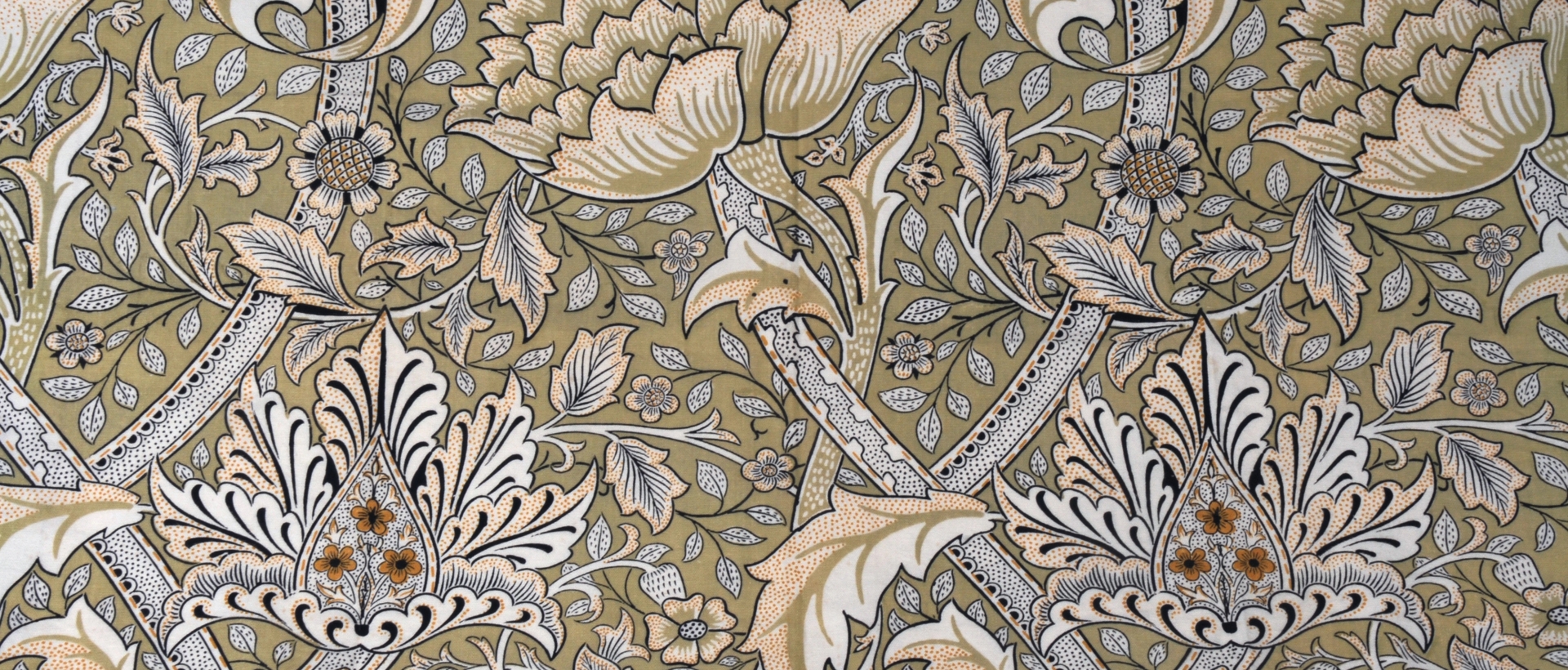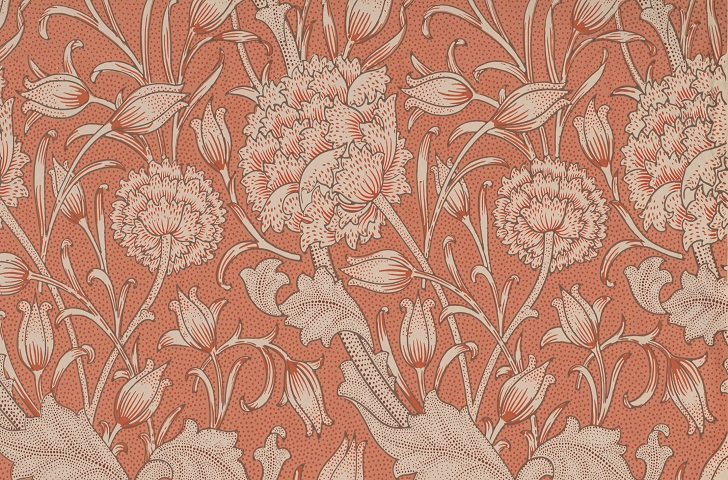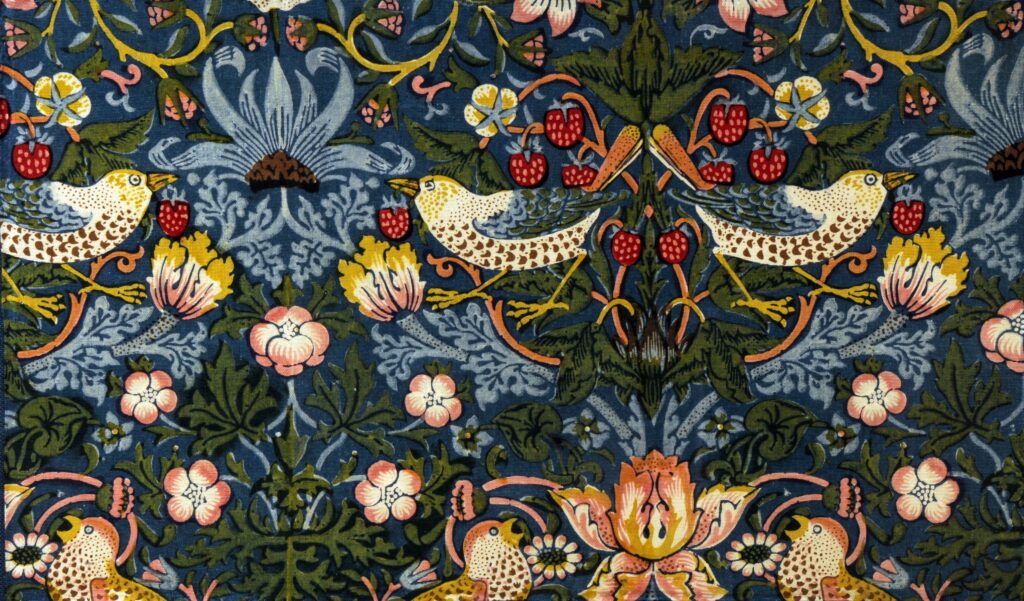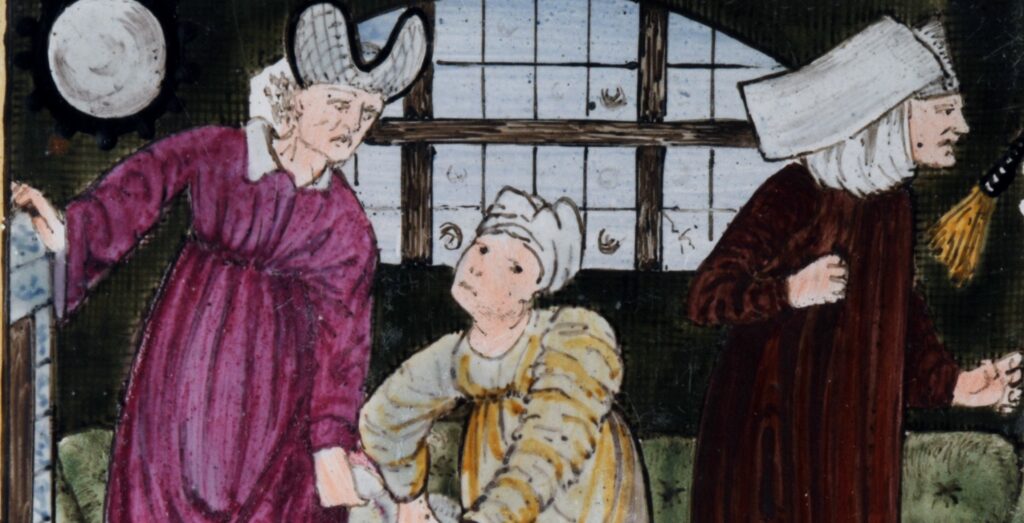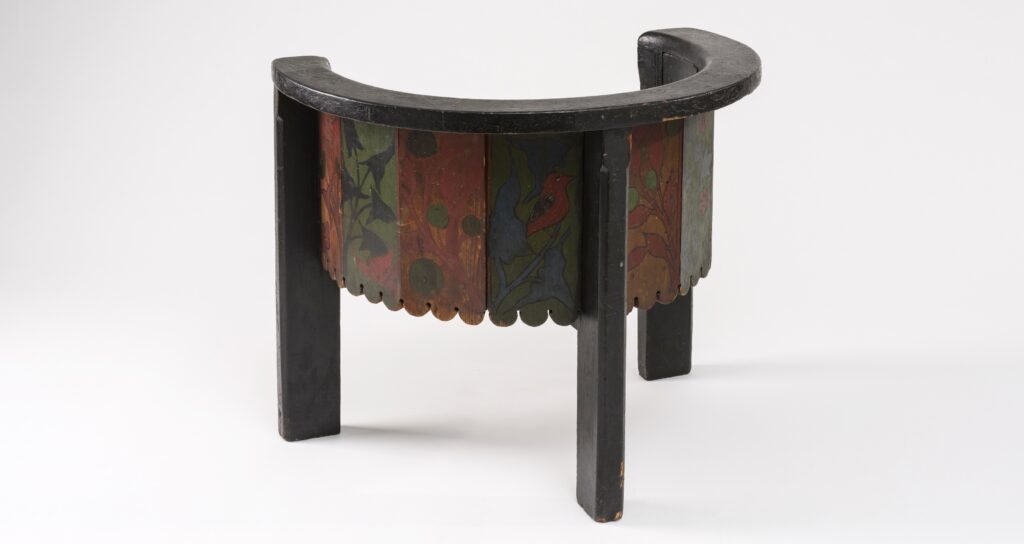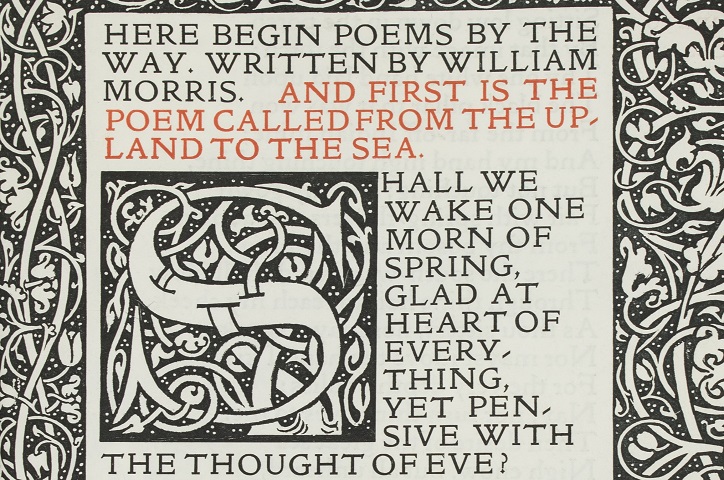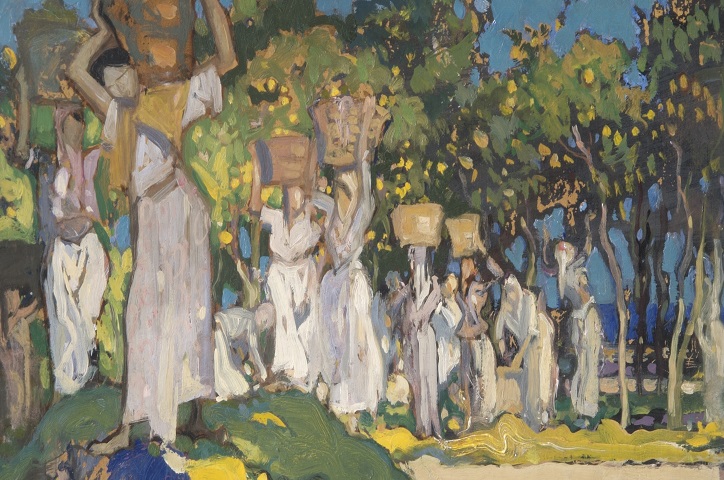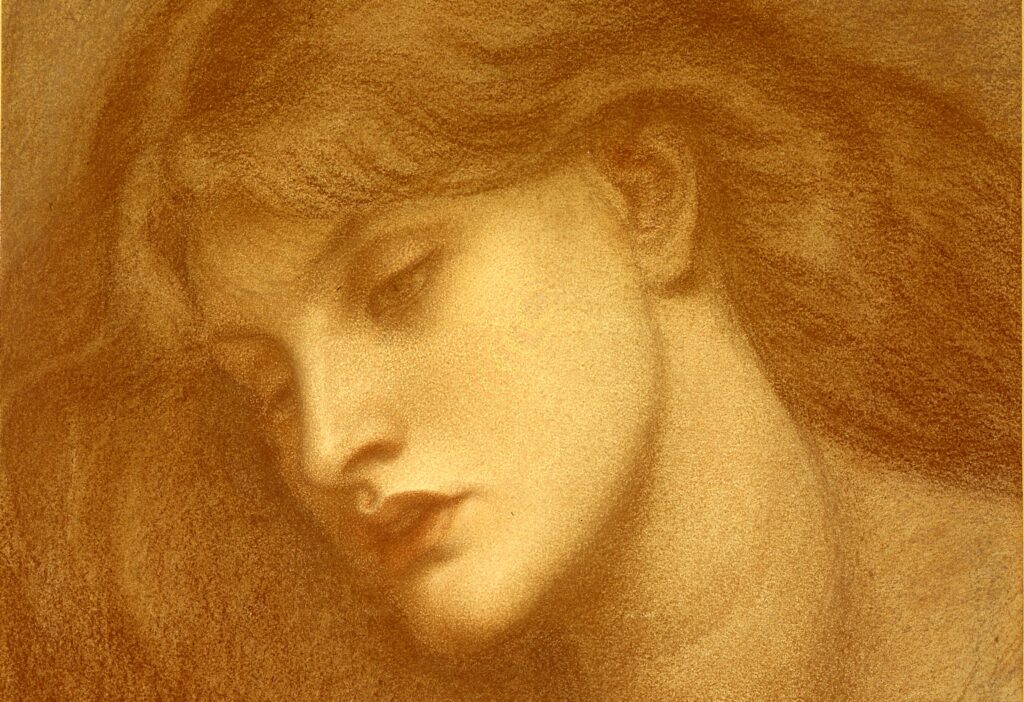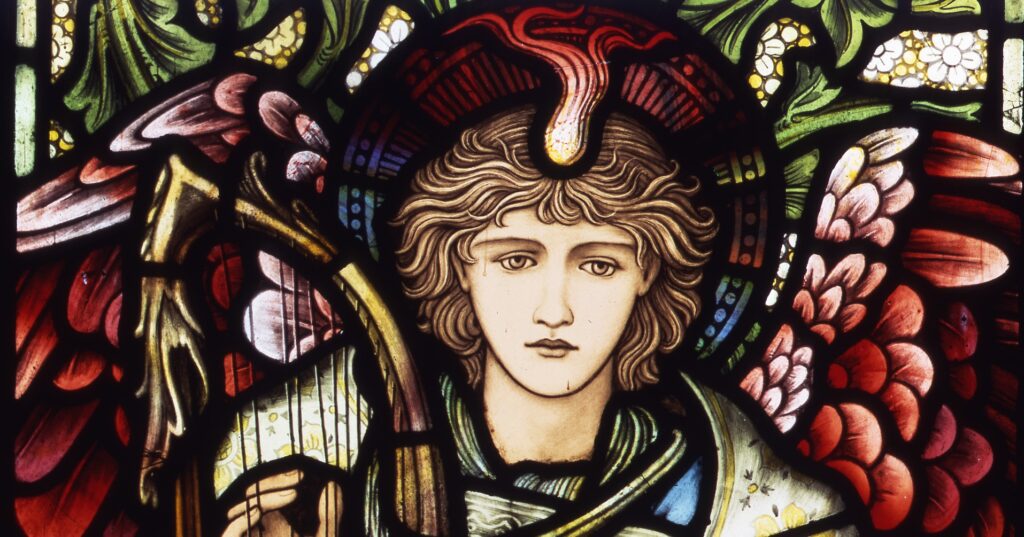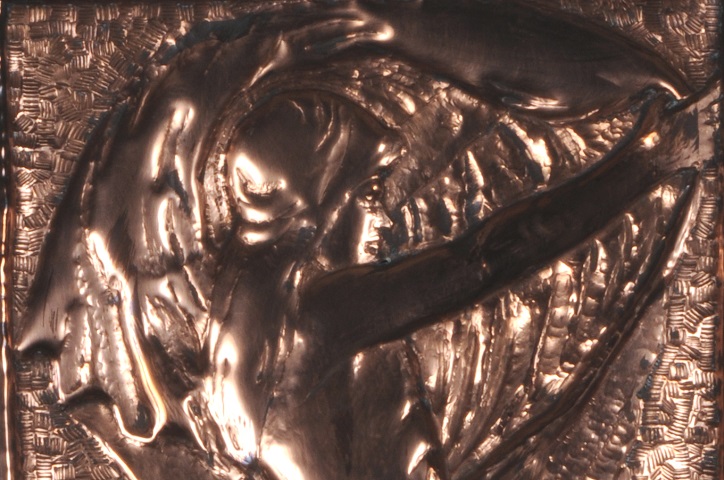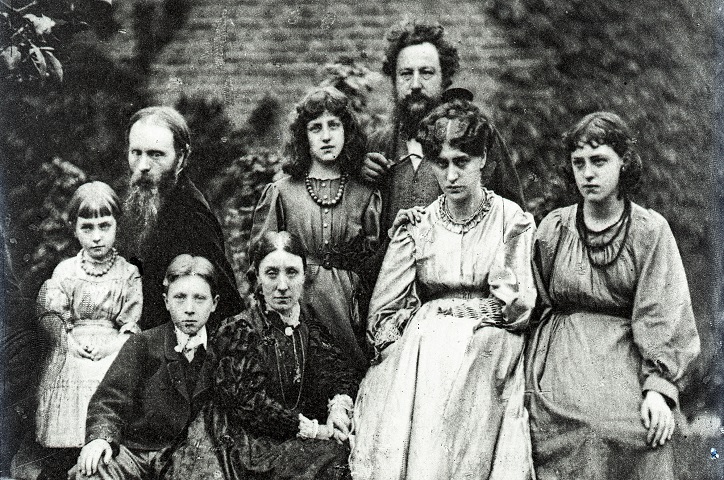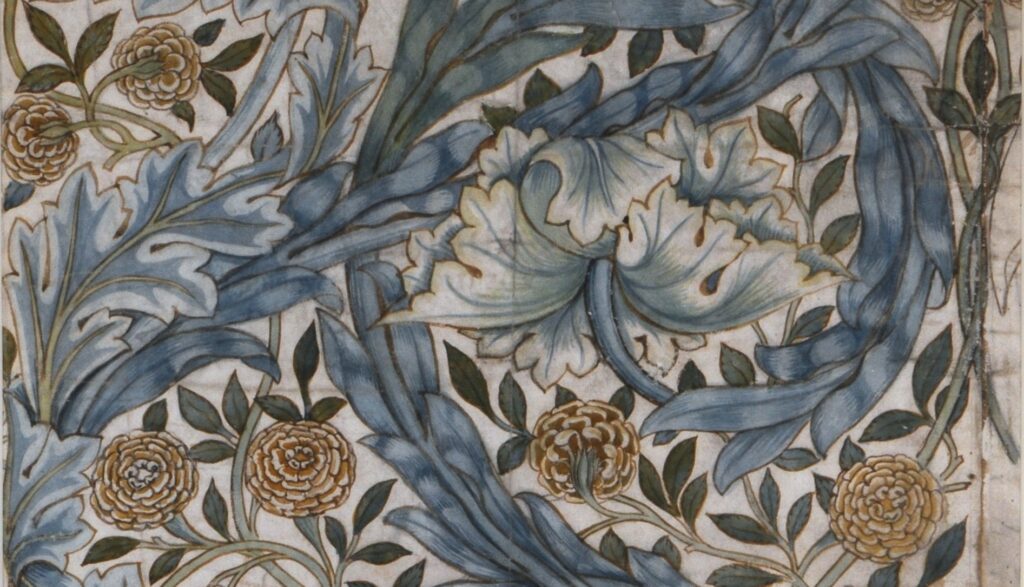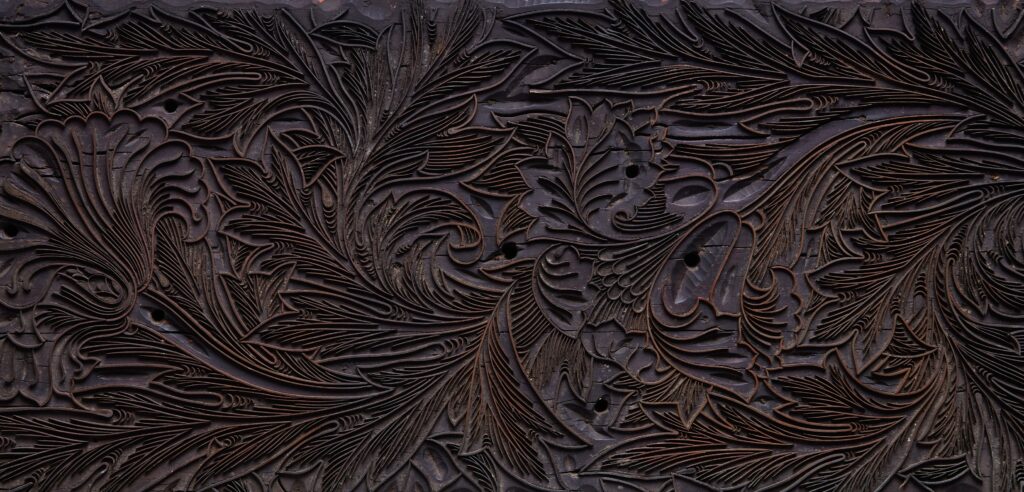Collection highlights
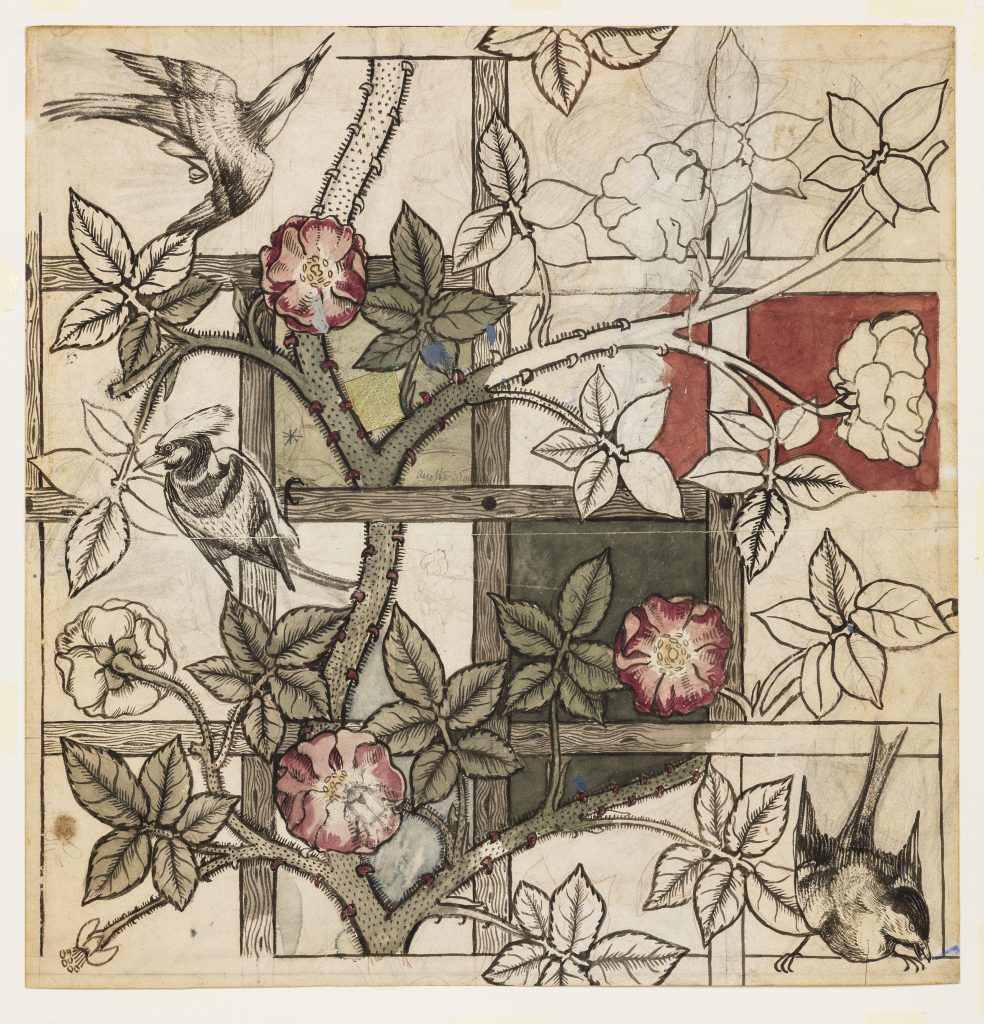
Design for Trellis Wallpaper, 1862
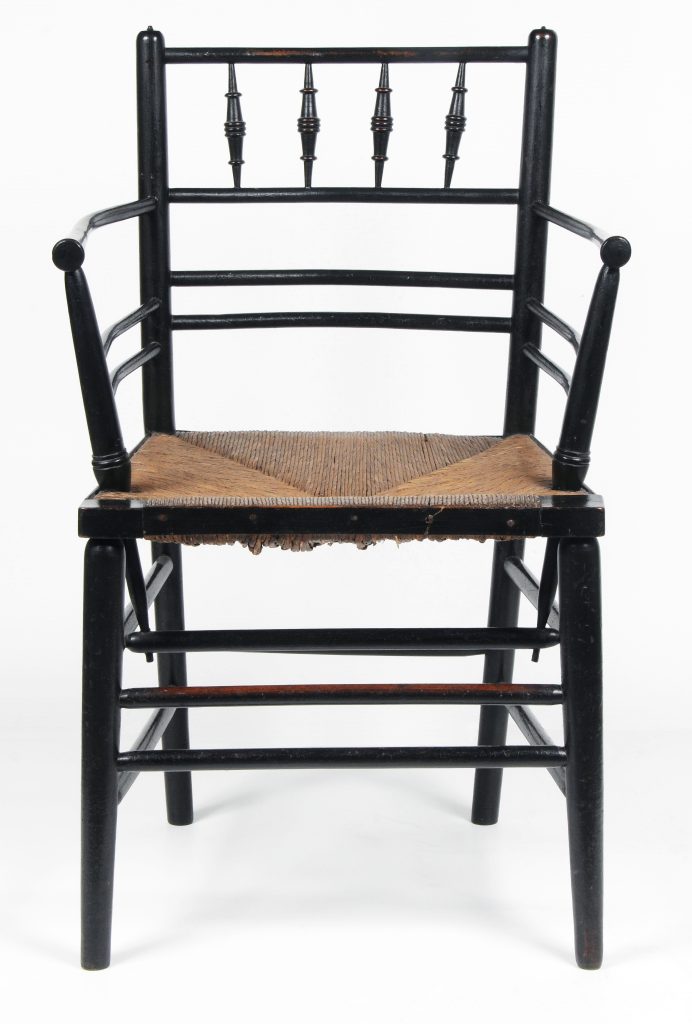
Sussex Armchair, 1869-1920s
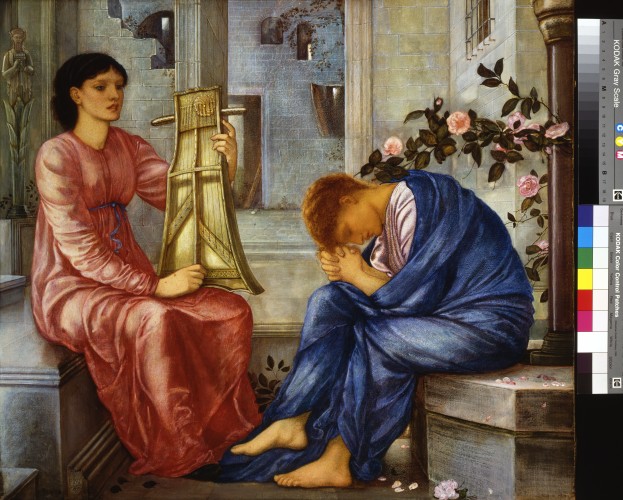
‘The Lament’, 1866
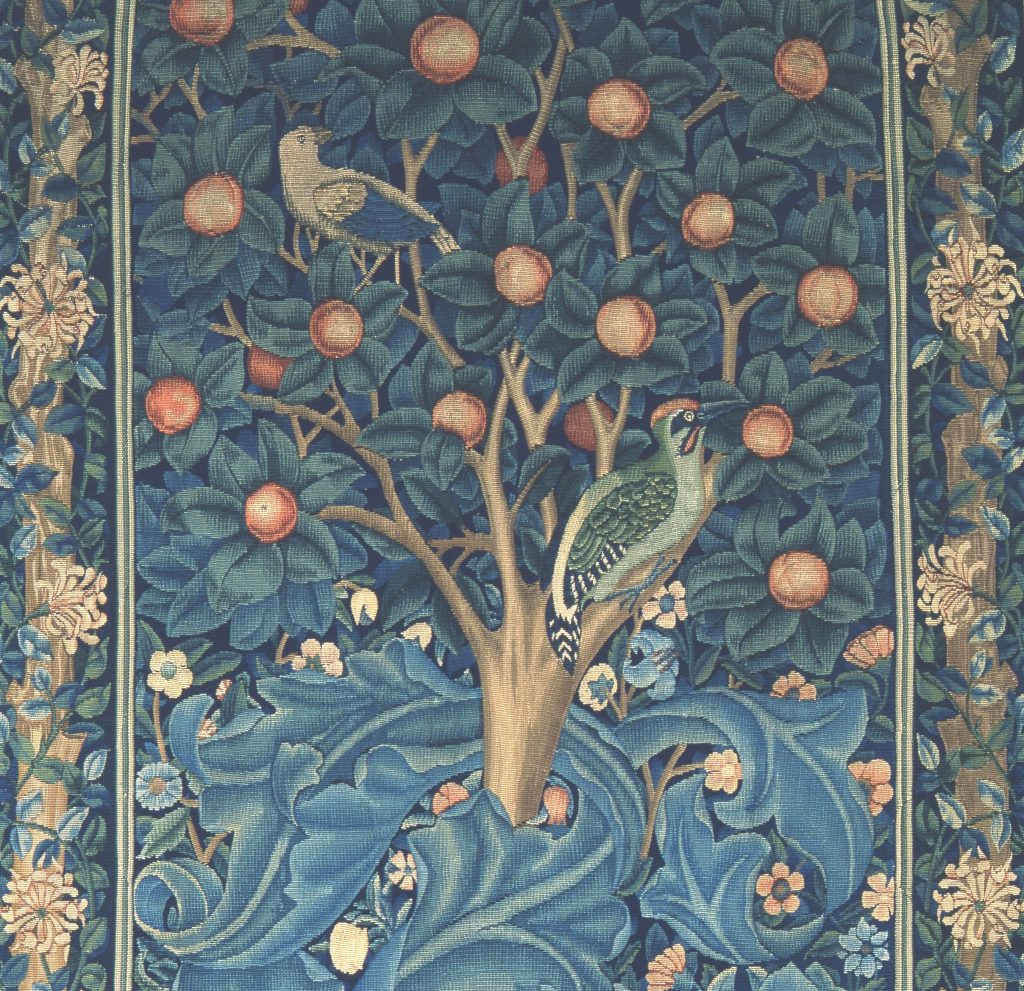
Woodpecker Tapestry, 1885 William Morris
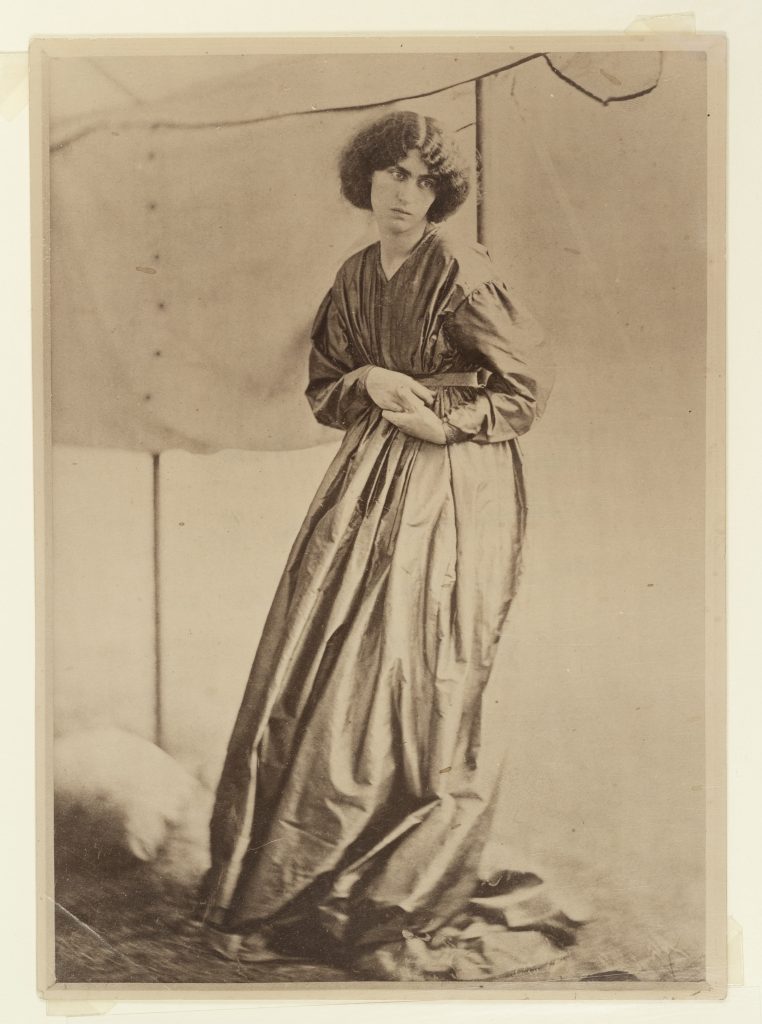
Jane Morris standing against an awning, 1865
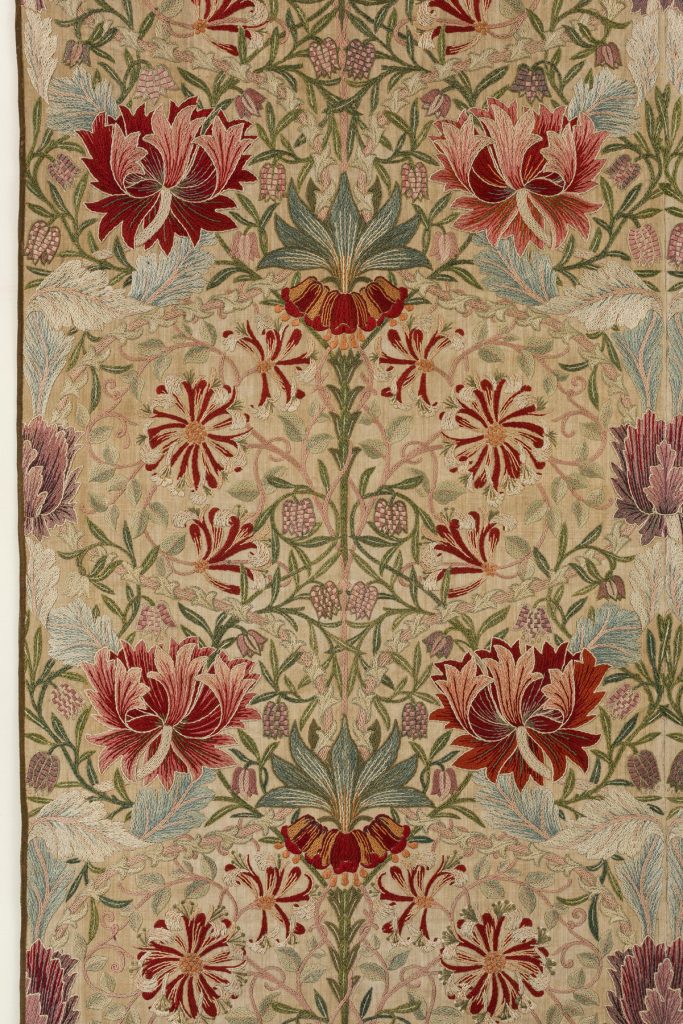
‘Honeysuckle’ embroidery, 1880s
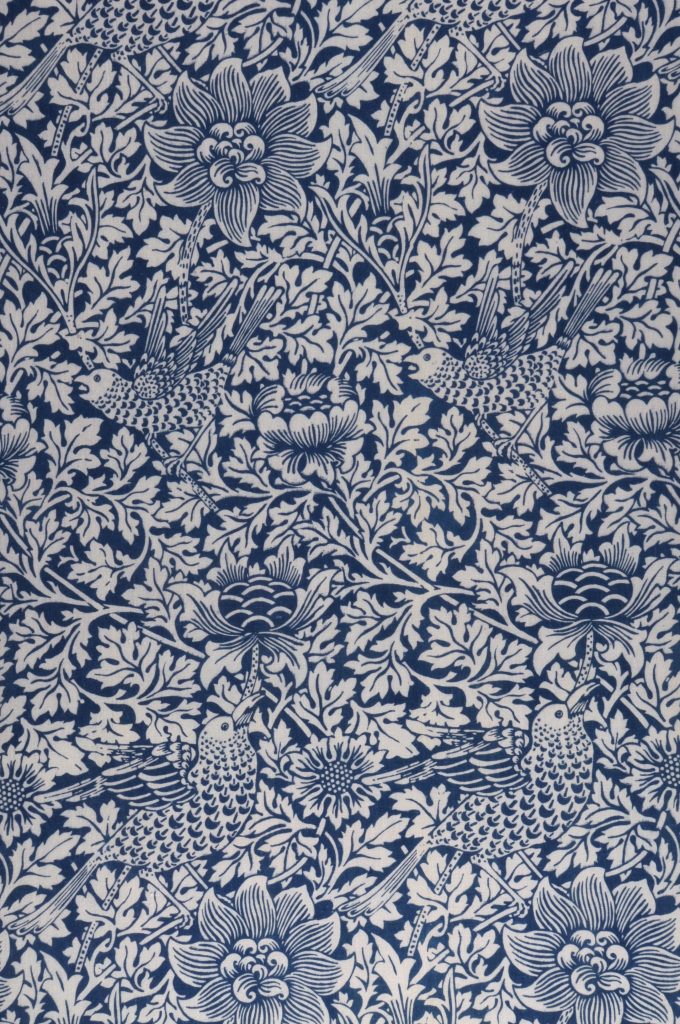
‘Bird and Anemone’ printed cotton, 1882
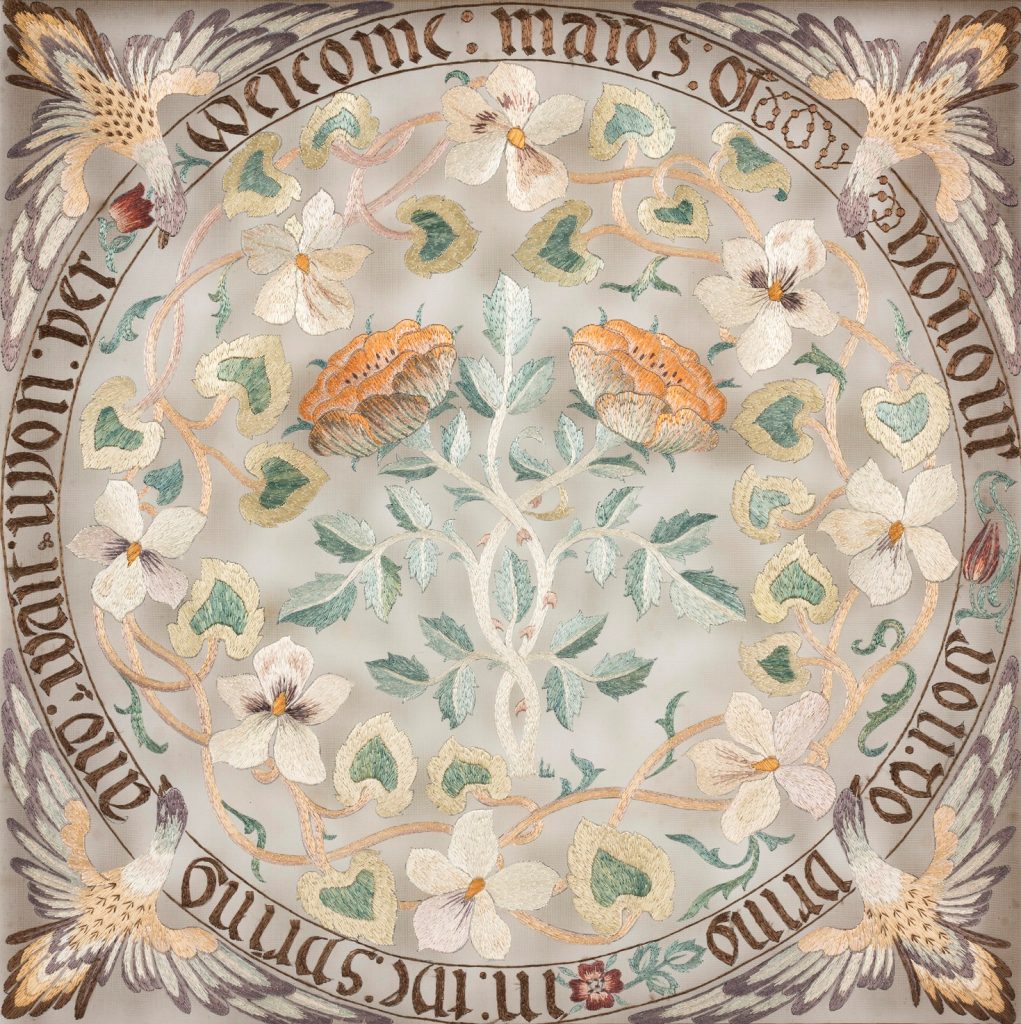
‘Maids of Honour’, 1890s
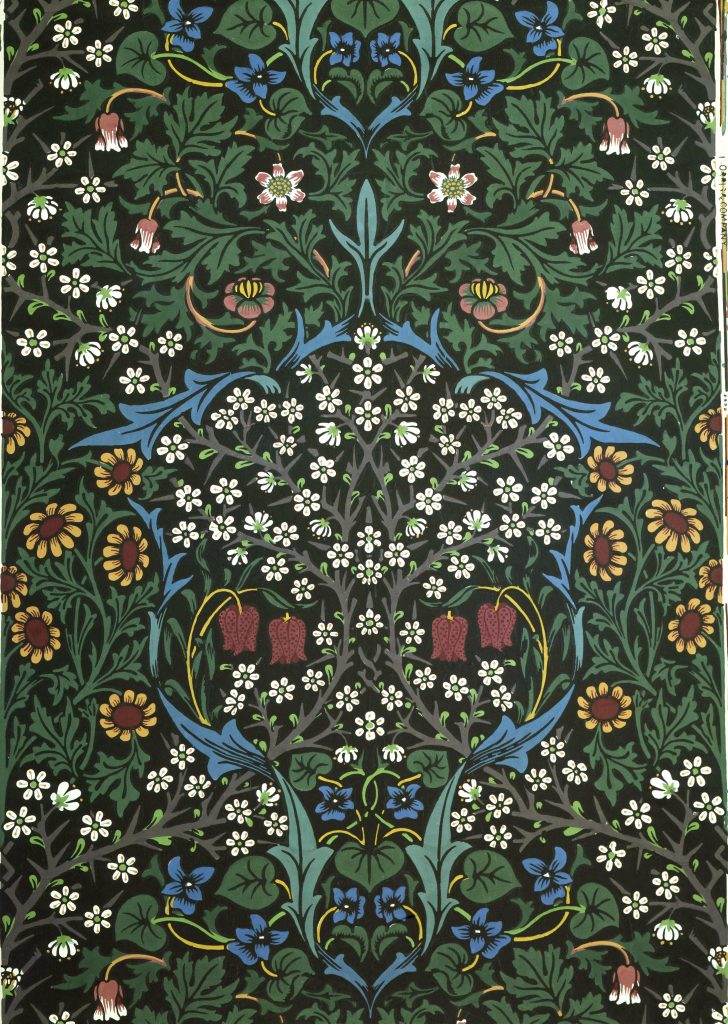
‘Blackthorn’ wallpaper, 1892
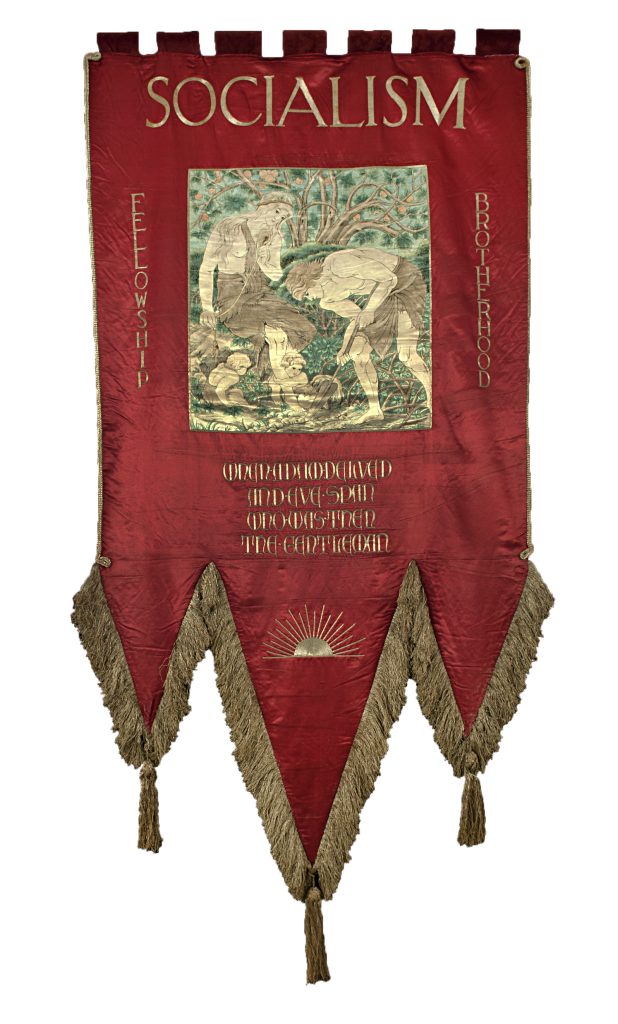
Socialist Banner, c.1890s
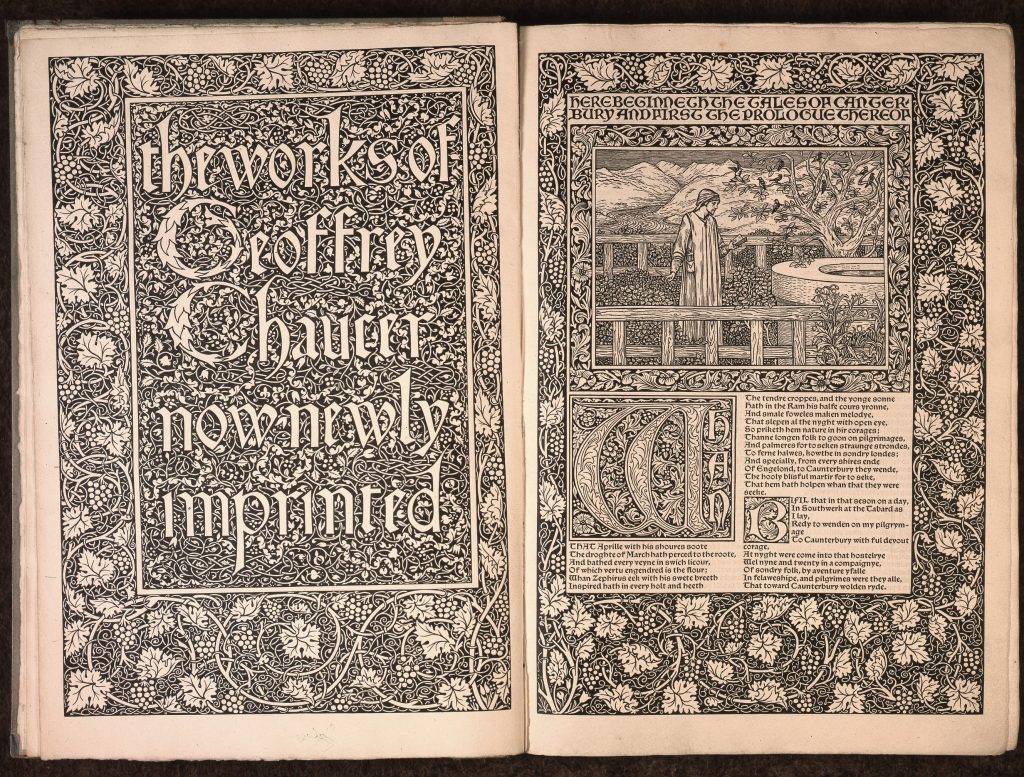
The Works of Geoffrey Chaucer, 1896
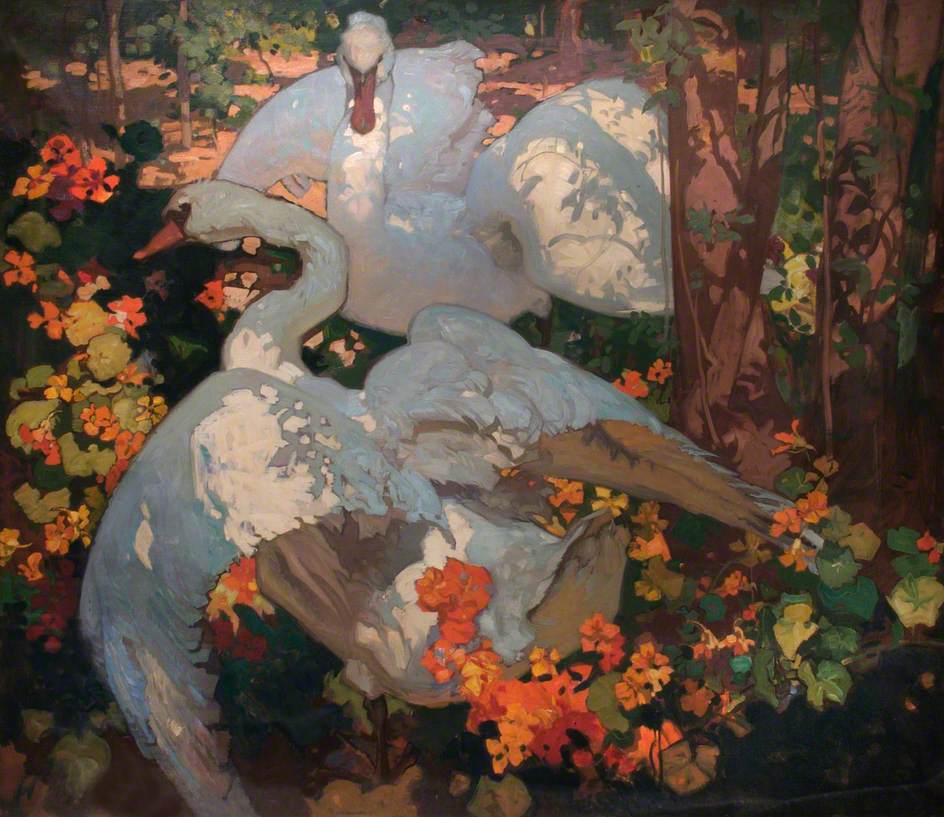
‘Swans’, c.1921
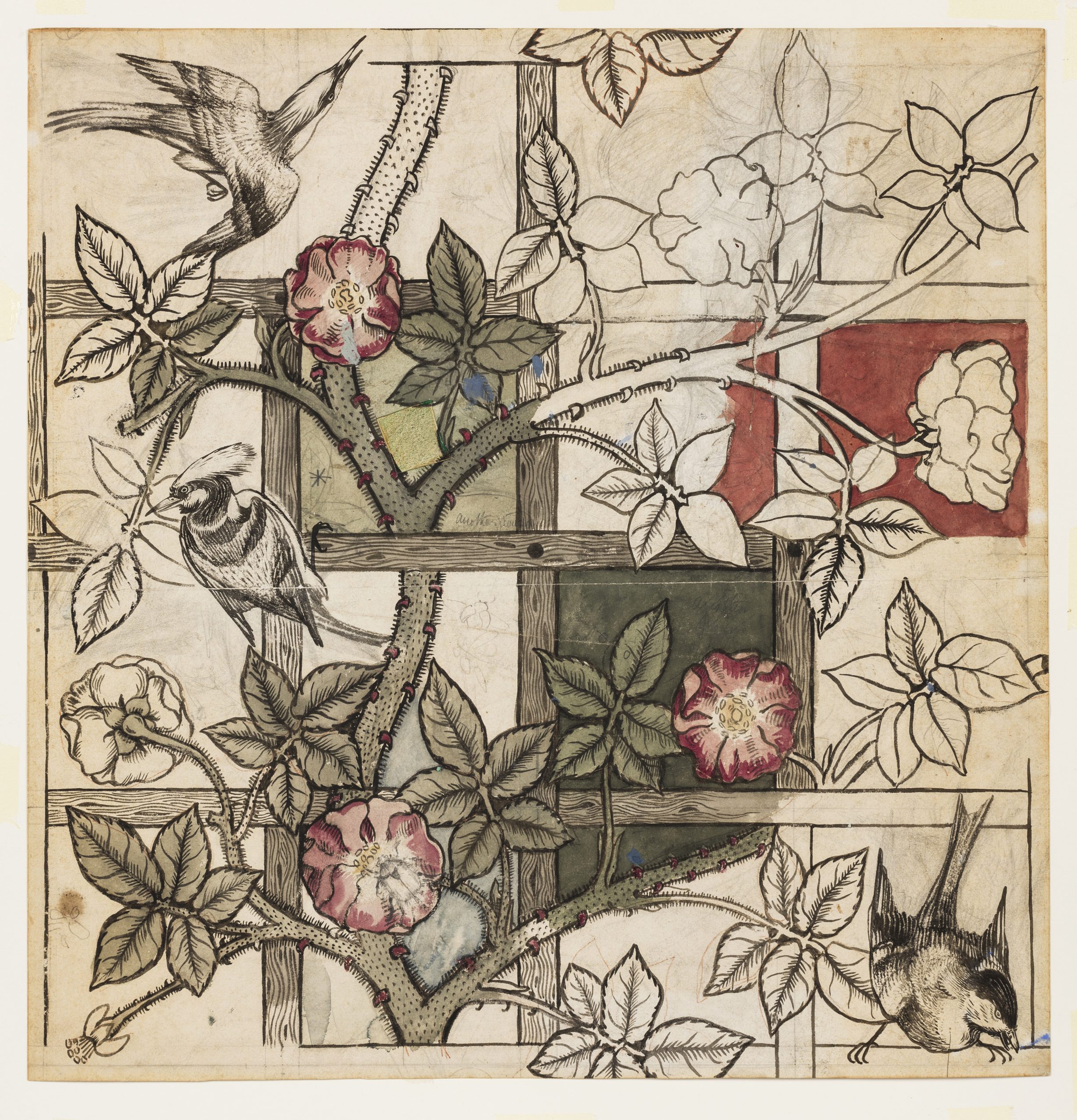
Design for Trellis Wallpaper, 1862
'Trellis' was the first wallpaper ever designed by William Morris, and the third to be printed by his company, Morris, Marshall, Faulkner & Co. The design was inspired by the rose trellises in Morris’s garden at Red House, the home designed for him and his wife Jane by Philip Webb. Webb collaborated with Morris on this wallpaper design, supplying the birds which add a sense of movement to the composition. This early work reveals Morris’s interest in flat, abstracted patterns, which he layered to create depth. Morris’s Arts and Crafts movement would have been impossible without the modest, thoughtful and hardworking architect and designer, Philip Webb, whom Morris met while training as an architect in Oxford. Although primarily an architect, Webb was an avid sketcher of plant and animal life. In addition to his role as a designer of furniture, metalwork and glass, Webb was also instrumental in the administration of Morris & Co., balancing the accounts and on occasion sacrificing his own wages to keep the business solvent.
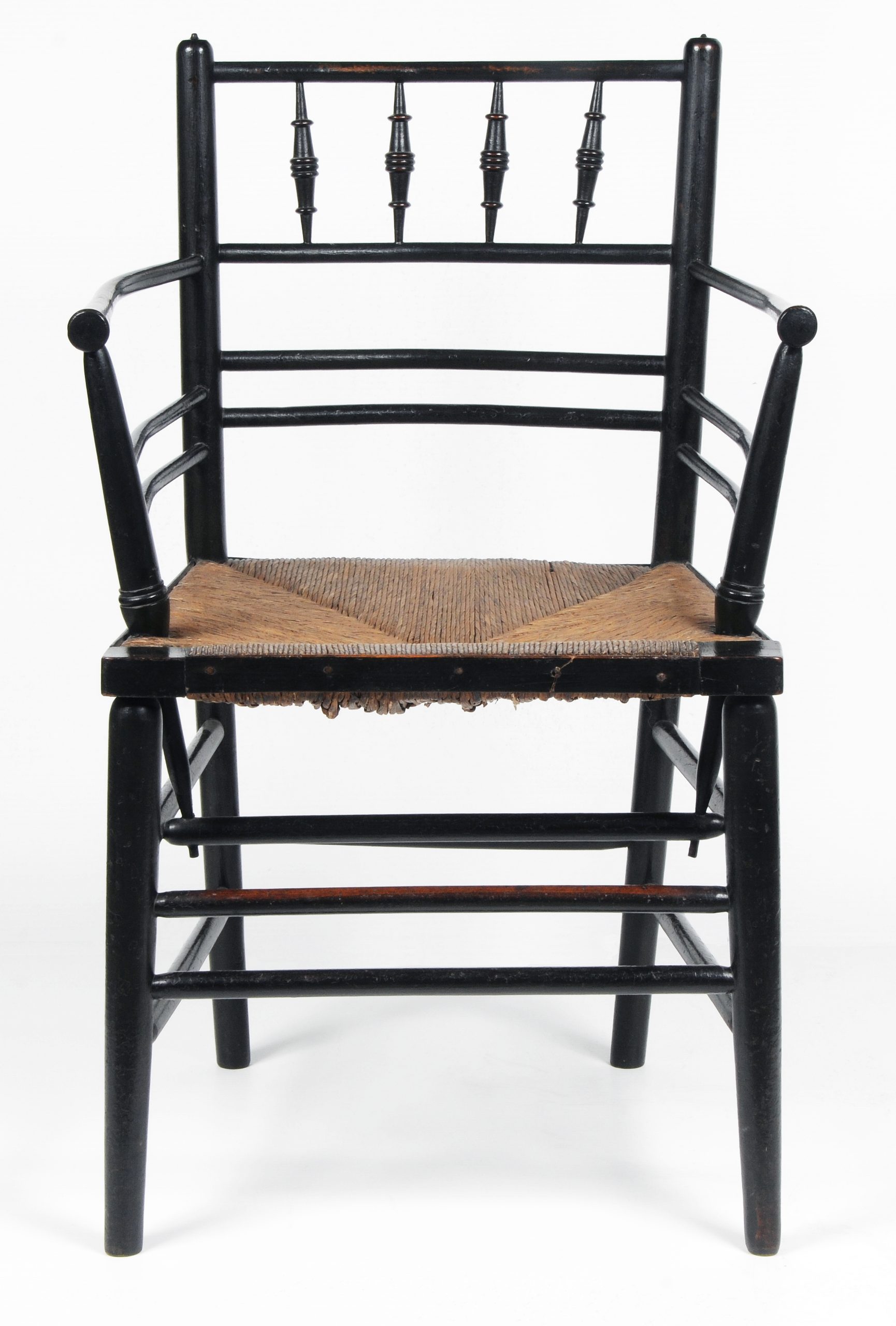
Sussex Armchair, 1869-1920s
This armchair is part of the popular Morris & Co. ‘Sussex’ range which also included a settle, corner chairs and single chairs (without arms). The range was made and sold from 1869 until the 1920s and was inspired by a late-Georgian country chair found in Sussex. The chairs were most likely designed by Philip Webb. As well as being commercially successful, the chairs were also used by partners of Morris & Co. in their own homes. William and Jane Morris kept a set of ‘Sussex’ chairs in their first family home, Red House, and in their final London home, Kelmscott House in Hammersmith. Edward Burne-Jones also used ‘Sussex’ chairs in his garden studio at The Grange, Fulham.

‘The Lament’, 1866
‘The Lament’ is considered to be Edward Burne-Jones most significant painting in the classical style of the late 1860s. Burne-Jones was a life-long friend of William Morris after the two met at Oxford University, he was a founding partner of Morris & Co. as well as an established painter working in the pre-Raphaelite style. Key stylistic features of this work can be seen in the chalky colours, simple outlines, and low relief of the figures. The work is washed in a mood of restrained sadness, characteristic of other paintings in 1866. Does the arrangement of the figures look familiar to you? The design owes much to Burne-Jones's study of the Parthenon frieze in the British Museum. He copied the Parthenon frieze in 1864 in a sketchbook held currently in the V&A. A further drawing at Birmingham Museum & Art Gallery depicts the figure on the right, sitting upright, close to the figure of Ares in the group of seated deities, taken from the figures in the Parthenon frieze. 'The Lament', though dated 1866, was largely painted in 1865. There are numerous studies for 'The Lament' and a later oil version was sold at Christie's in 1967 which has a different background.
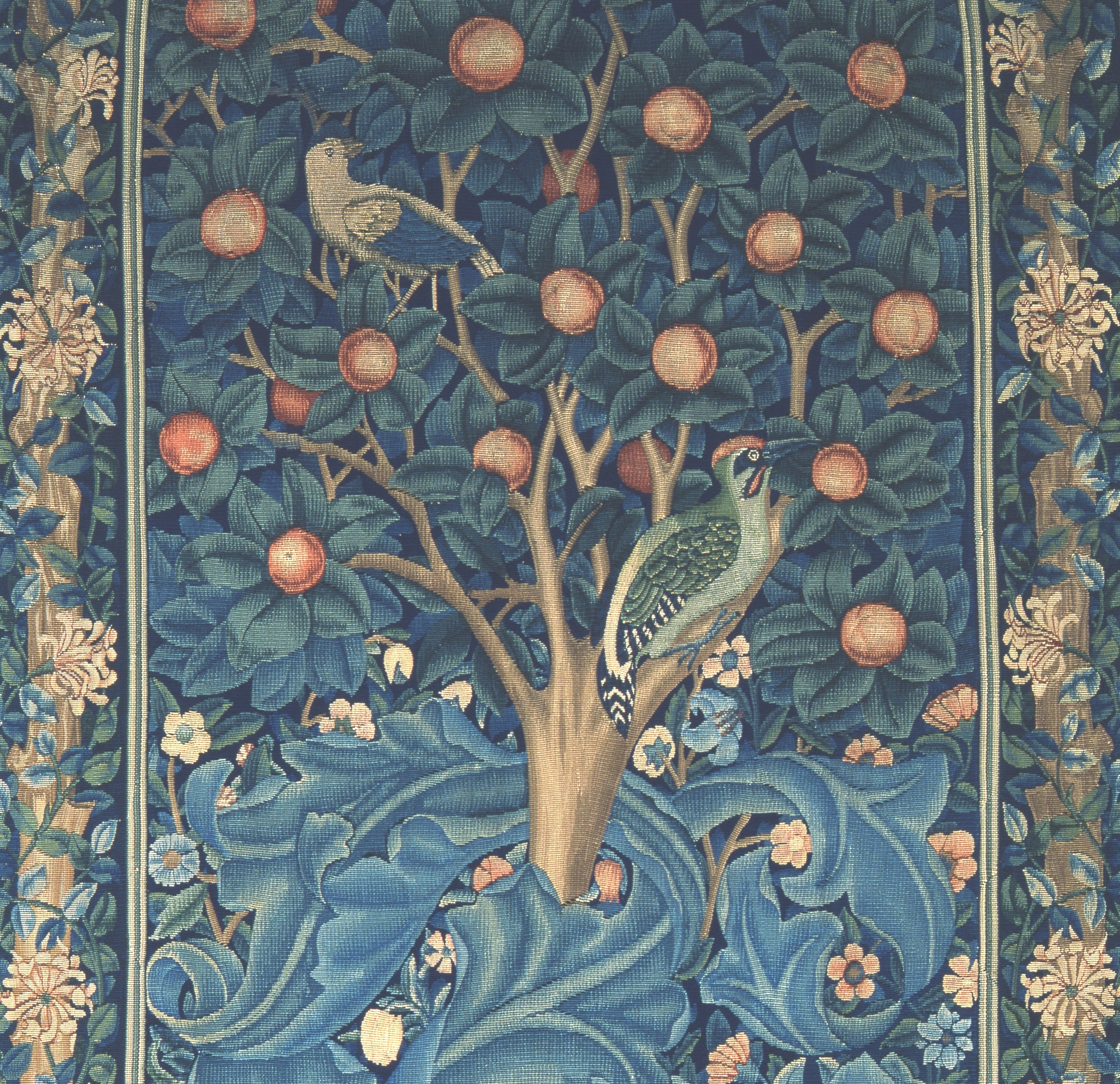
Woodpecker Tapestry, 1885 William Morris
Typically by the-mid 1880s, tapestry designs at Morris & Co. were largely a collaborative effort with groups of artists working on one design. This particular tapestry is unique, being designed entirely by William Morris and woven at Merton Abbey under his strict supervision. The design is based on a classical legend from Ovid’s ‘Metamorphoses’. The story follows King Picus of Latium who was skilled at augury - the Roman practise of interpreting the will of the gods by studying the flight patterns of birds. Picus was famous for using a woodpecker for his divination. In the legend, the sorceress Circe attempts to seduce Picus whilst he is out hunting. Picus rejects Circe’s advances, so she transforms him into a woodpecker for scorning her love. The text on this tapestry comes from Morris’s own poetry on the tale: "I once a king and chief now am the tree bark’s thief, ever twixt trunk and leaf chasing the prey". Morris admired antique tapestries ever since he encountered them in the Queen Elizabeth Hunting Lodge in Epping Forest as a child. He later recalled: "How well I remember as a boy my first acquaintance with a room hung with faded greenery… and the impression of romance it made upon me". Morris first began learning tapestry weaving in 1879, setting up a loom in his bedroom at Kelmscott House so he could spend some time weaving each morning. He even kept a diary of his progress which shows that some days he spent up to nine or ten hours at the loom. After working for over five hundred hours on his first tapestry, ‘Acanthus and Vine’, Morris stopped before he completed it, having felt he had acquired the basic technique required to move on to further projects.
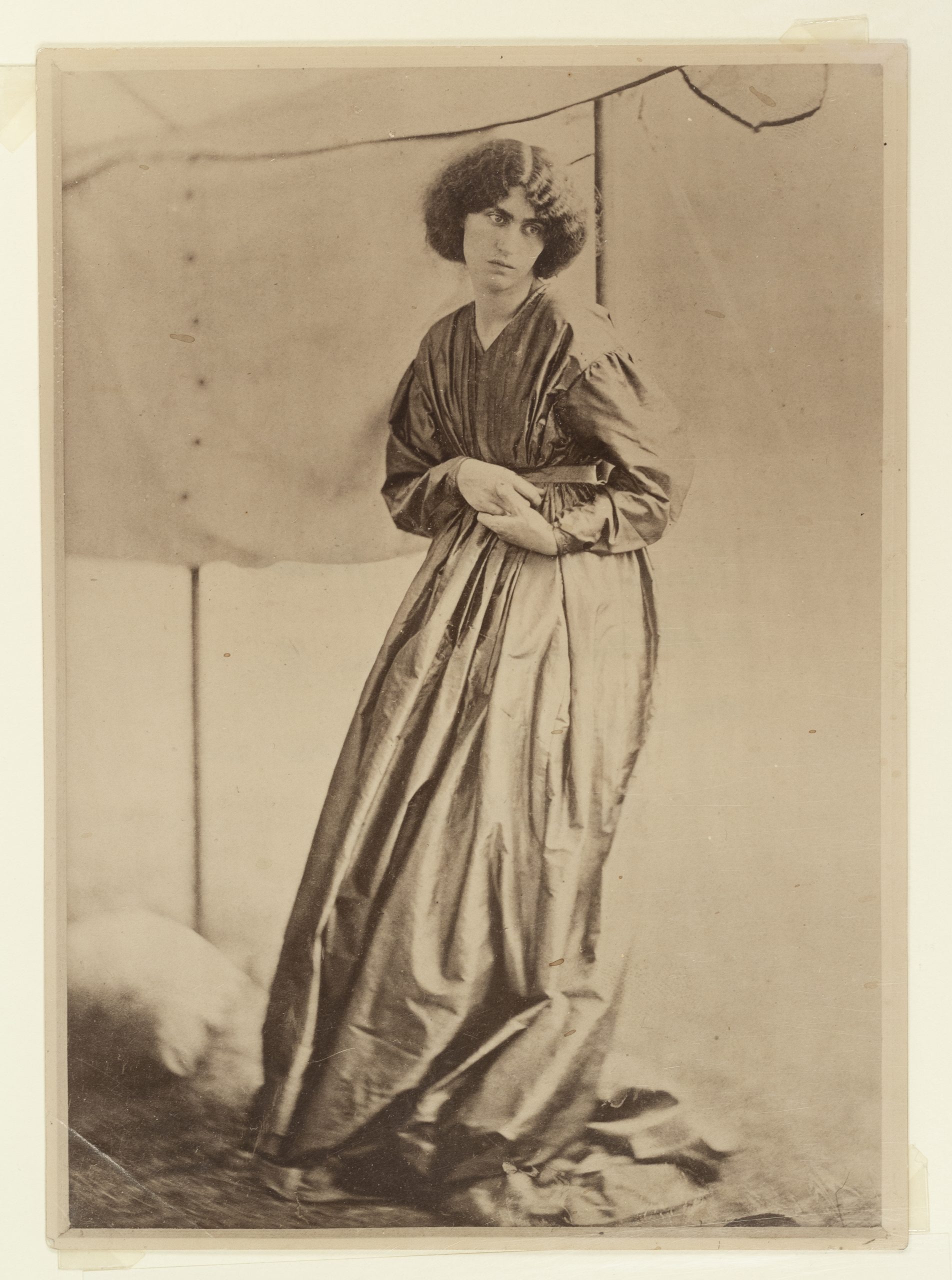
Jane Morris standing against an awning, 1865
This photograph shows Jane Morris, William Morris’s wife, standing in the garden of Tudor House, the home of Dante Gabriel Rossetti in Cheyne Walk, Chelsea. The photo is one from a series of images of Jane which were posed by Rossetti and then photographed by John Parsons. The photograph is a copy print, possibly by Emery Walker, of an original from an album of the Rossetti series now in the Victoria and Albert Museum.
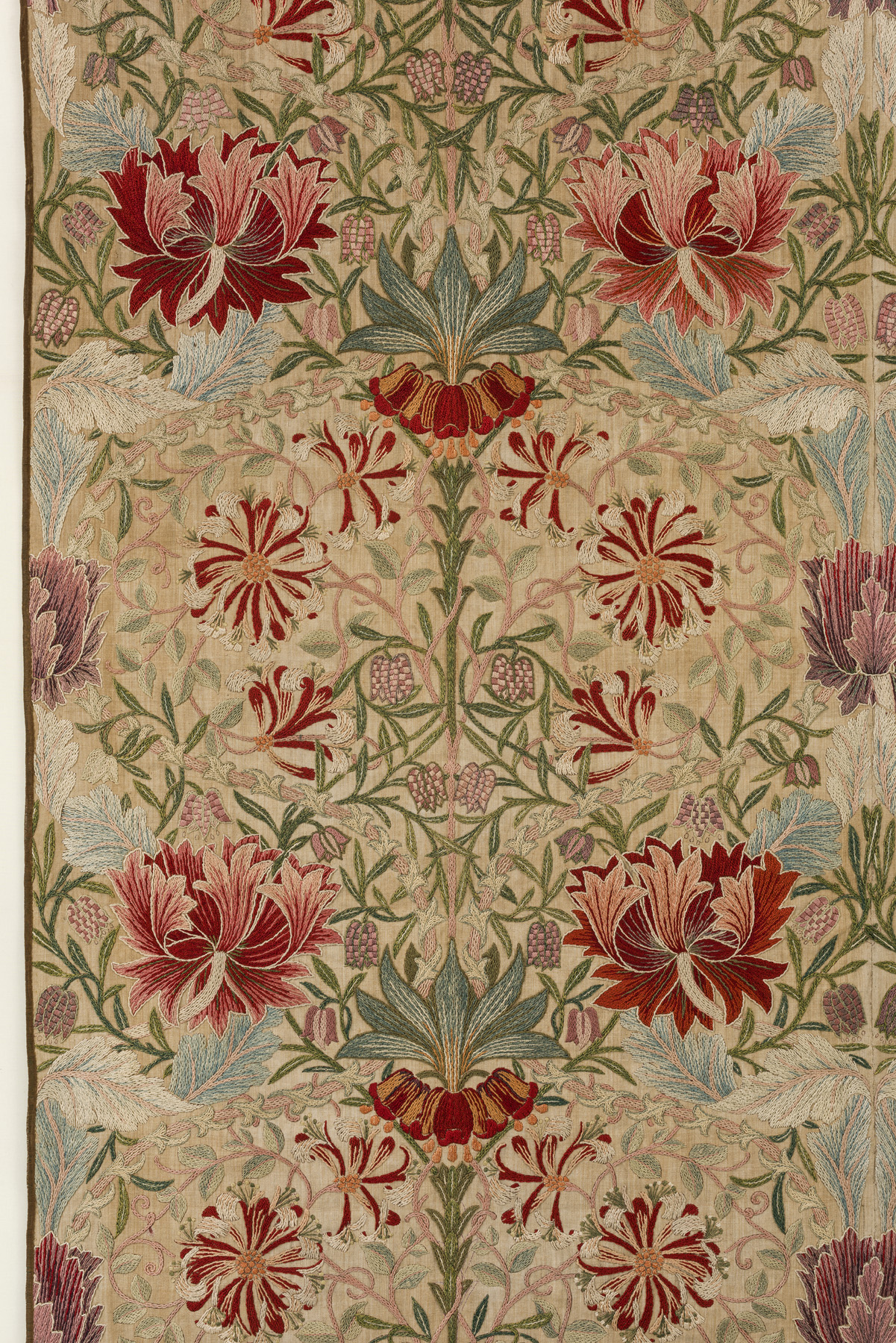
‘Honeysuckle’ embroidery, 1880s
Jane Morris was a skilful embroiderer and this is one of very few surviving pieces that can be definitively attributed to her hand. She worked on it with her elder daughter, Jenny, basing the design on an original 1876 pattern by William Morris. The design was sold through the Royal School of Art Needlework in London in the late 1870s. This version was exhibited at the first Arts and Crafts exhibition in 1888. Later it was sent by May Morris, the younger daughter of Jane and William Morris, to Paris for the Louvre exhibition of British and Irish decorative work in 1914. The remains of the exhibition label are stitched to the reverse.
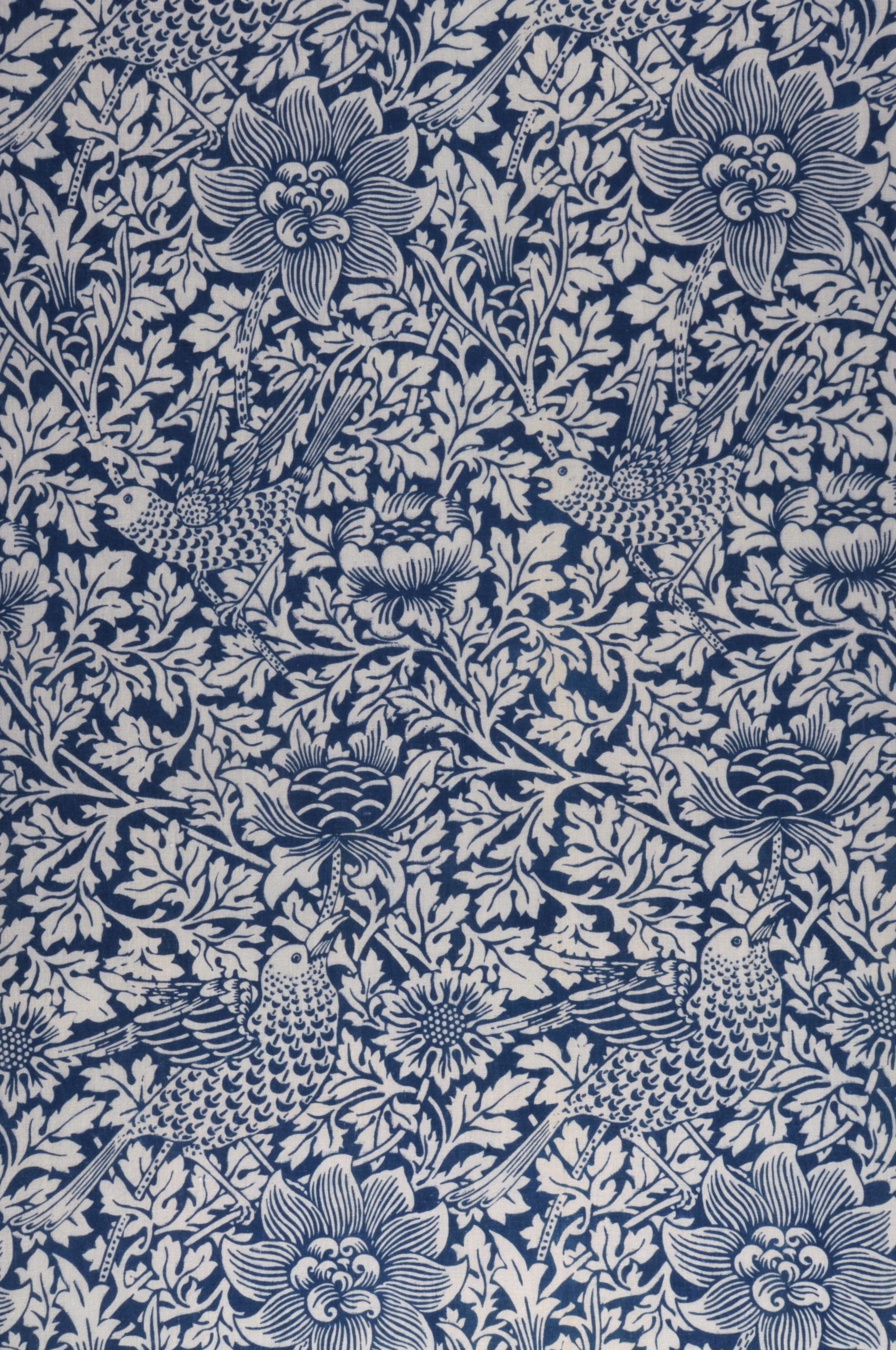
‘Bird and Anemone’ printed cotton, 1882
‘Bird and Anemone’ was designed by William Morris in 1881 and was registered on 17th June 1882. The monochrome pattern is one of only three designs issued by Morris as both a wallpaper and a printed cotton. Although they were produced around the same time, the narrow upright rectangular repeat suggests it was likely originally intended to be a textile design. The pattern was one of the first textiles to be printed at Morris's factory Merton Abbey, and produced in this colourway using the indigo-discharge method and a red colourway.
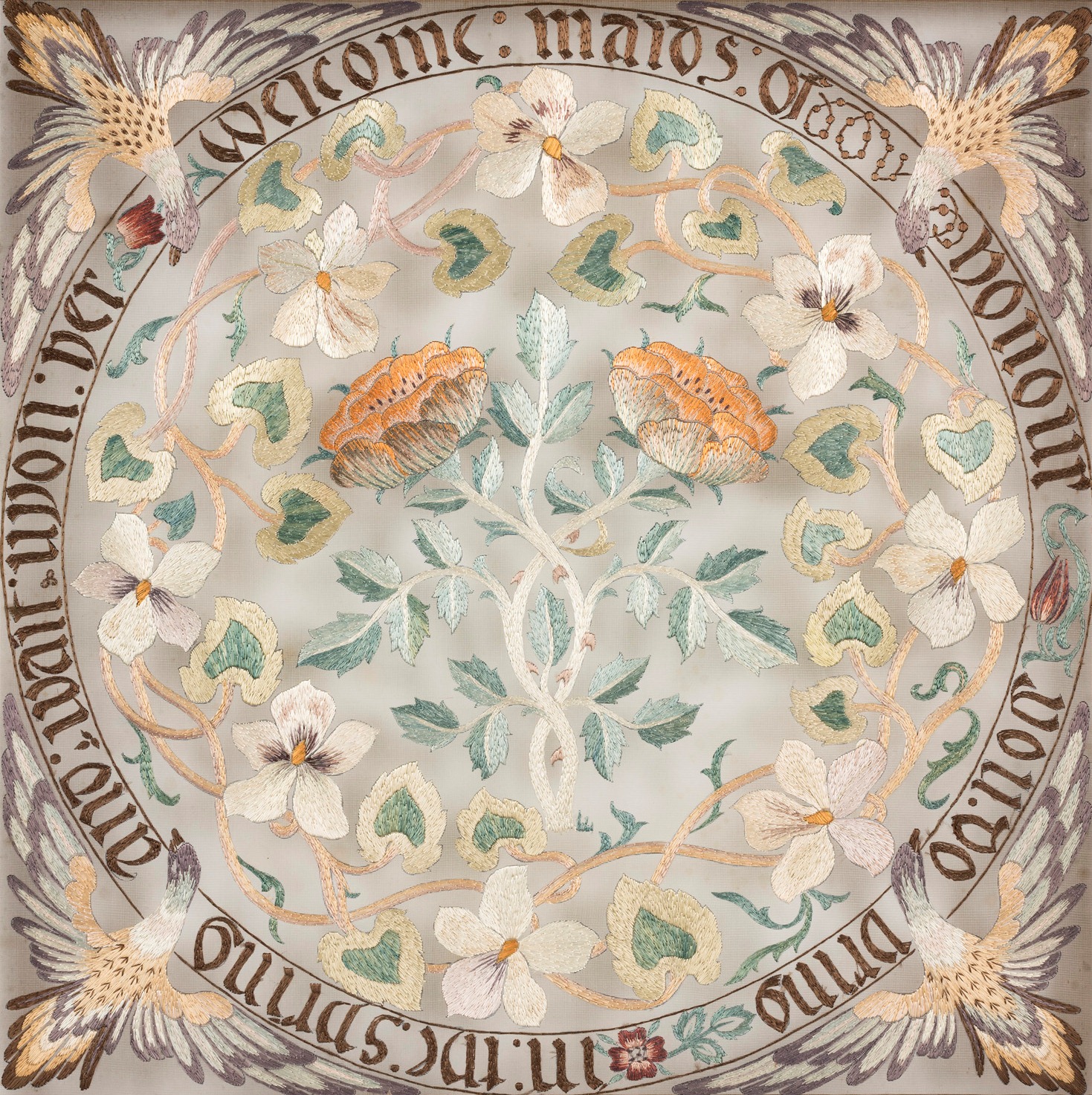
‘Maids of Honour’, 1890s
This embroidery was designed and worked by May Morris, William’s younger daughter, and was one of the firm’s most popular embroidery designs. This example is particularly fine and showcases May Morris's technical skill. The overall design is worked in split, long, short and satin stitch in silks on a gauze background. The outer border of the central roundel is inscribed with Gothic lettering reading the opening lines of a poem by Robert Herrick, “Welcome, maids of honour, you do bring in the Spring and wait upon her”. Four birds with outstretched wings are placed in each corner of the design. The original design is in the Victoria and Albert Museum. Examples also exist in the collections of Manchester School of Art, Crabtree Farm and Museum of South Australia.
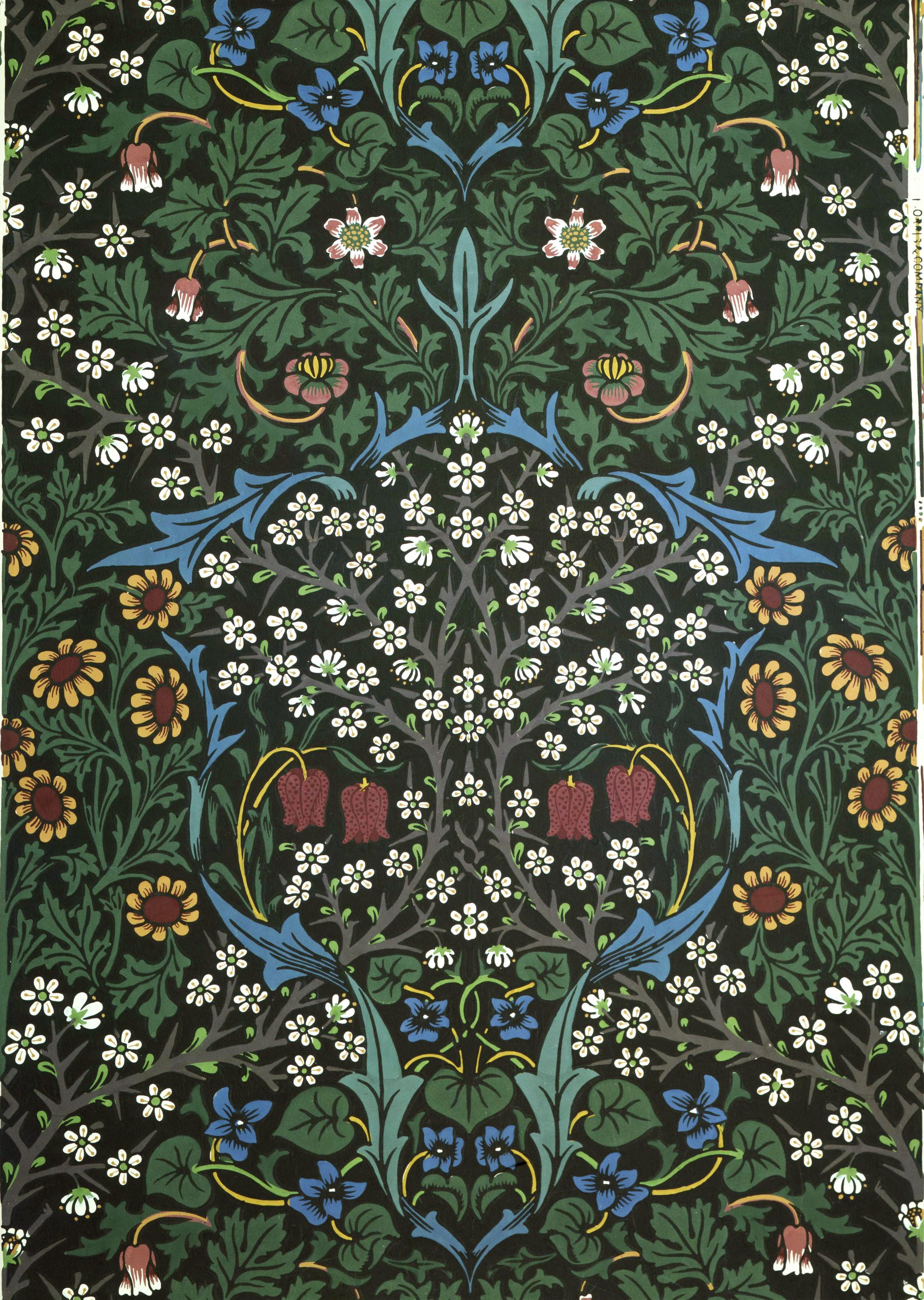
‘Blackthorn’ wallpaper, 1892
This wallpaper was designed by John Henry Dearle, who from 1890 was the chief designer at Morris & Co. As a teenager, he had begun working at the company shop and later became a design apprentice. Dearle designed this pattern in 1892, filled with an array of flora; white blackthorn (or sloe) blossom, violets, and meadow flowers such as red snake's head fritillaries and yellow daisies. The vivid colours of the flowers burst out against the very dark green background. Unlike many of the firm’s wallpapers, this pattern was only available in one colourway. The right edge of the paper is stamped with the firm’s name, 'MORRIS & COMPANY'.
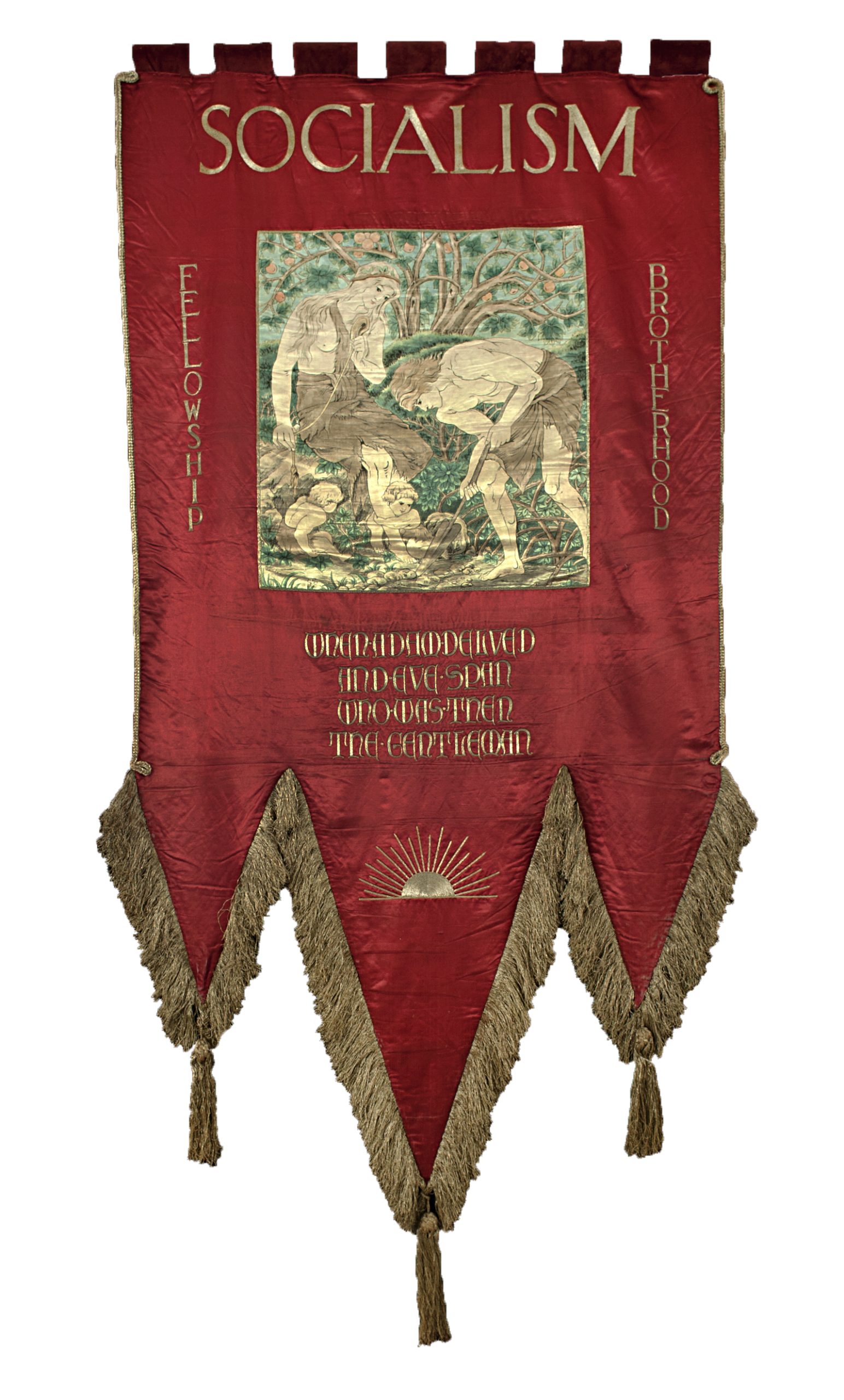
Socialist Banner, c.1890s
While always politically conscious, at 49 William Morris crossed ‘the river of fire’ and became a revolutionary socialist. Throughout his life he felt uneasy about the disparity between his comfortable lifestyle and the conditions endured by most of the British working classes. In the 1880s Morris began to take action, hoping to overthrow the system that enabled the rich to profit from the labour of others. He attended marches, wrote articles and lectured all over the country. During the rallies Morris and his comrades attended, they carried banners to identify their political allegiance. In this banner, the image of Adam and Eve has been borrowed from Burne-Jones’s illustration to Morris’s socialist novel ‘A Dream of John Ball’. The novel followed the story of a priest who was one of the leaders of the Peasants’ Revolt in 1381. John Ball believed all people were created equal, asking "When Adam delved and Eve span, who was then the gentleman?" Morris’s political activities began when he joined the Social Democratic Federation at its inaugural meeting in June 1881. However, the organisation soon became factionalised and Morris broke from the Social Democratic Federation in 1884, disagreeing with its leadership. Morris established his own political group, the Socialist League, a more radical collective that sought a revolutionary overturn by the mobilised working classes. Morris continued to run his business alongside a decade of strenuous political activism. He saw campaigning to be compatible with his design work and deeply regretted that products were not affordable to the working classes. Morris’s aim in his socialist campaigns, as with his designs, was to create a society where everyone lived comfortably in beautiful surroundings.
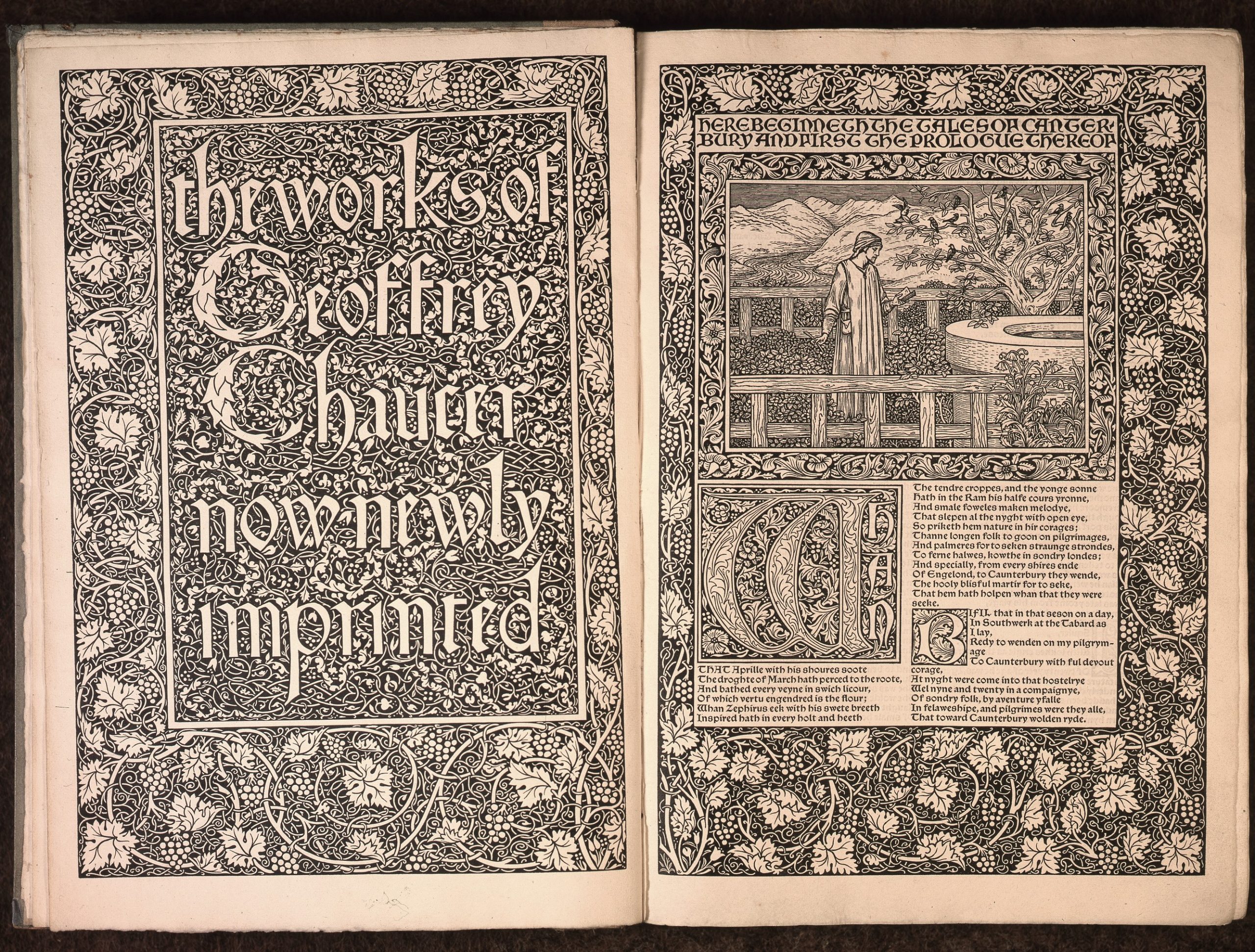
The Works of Geoffrey Chaucer, 1896
William Morris spent the last years of his life occupied with printing this book, the ambitious Kelmscott Press edition of ‘The Works of Geoffrey Chaucer’. The project involved printing a new edition of the complete works of Geoffrey Chaucer with decorated borders and initials, a newly designed typeface and numerous illustrations. The book took over four years to complete and included eighty-seven woodcut illustrations by Burne-Jones. Shown here is the first page of a paper edition of the Kelmscott 'Chaucer'. The title page, initial letters, and border decoration were all designed by Morris. The first woodcut illustration by Burne-Jones can also be seen and depicts a portrait of Chaucer. Morris had to scale down his ‘Troy’ typeface for this work, creating the font seen here. Despite the scaled down font, the book is by far the largest produced by the Kelmscott Press. The Kelmscott 'Chaucer' was the last great project of Morris’s life and combined his passions for both literature and design. The process of printing this book saw Morris's socialist philosophy in action, through the use of woodcut illustrations, a rejection of modern mechanisation, and in the division of labour employed to create it. In total, 438 copies of the book were printed over two years; thirteen were printed on vellum and 425 on handmade paper. Forty-eight paper editions were specially bound in white pig’s skin featuring a unique design by Morris. A few months before his death, Morris was shown a copy of the specially bound edition for the first time, which he described as ‘very satisfactory’.

‘Swans’, c.1921
Frank Brangwyn, painter, printmaker and designer began his career as an apprentice at Morris & Co., working on designs for embroideries and stained glass. He left to pursue painting and became one of the most famous artists of the early twentieth century. According to the diary of Frank Alford, one of Brangwyn's studio assistants, Brangwyn began painting this work on 13 July 1921 from preliminary drawings done the previous year by Alford. The picture was painted in the garden at Temple Lodge, Brangwyn's house and studio in Hammersmith. A stuffed swan was used as the model for the two birds while the thicket of nasturtiums in the foreground were, according to Alford, “only about a handful in a wooden tub”. Originally purchased by the Japanese shipping magnate Korijo Matsukata, at some point after 1924, when it was known to be in Matsukata's possession, Brangwyn bought the painting back. Brangwyn was essential in founding the William Morris Gallery and donated a substantial collection of 19th and early 20th century art. The Gallery holds the second largest collection of Brangwyn's work in the UK, after the British Museum.
